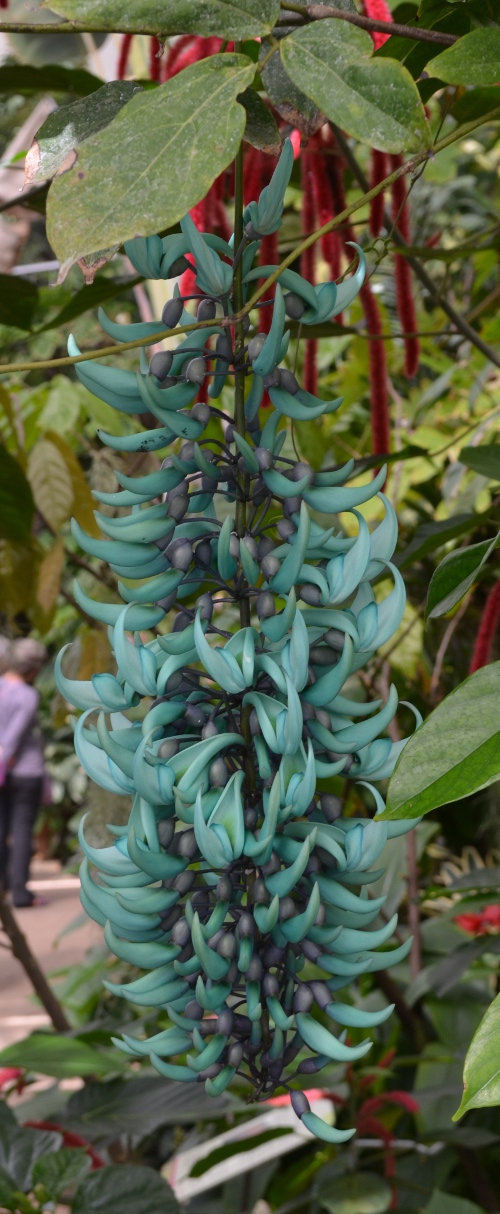For those students not taking the fieldwork module today saw the final organised visit of the MSc course. This time to the RHS garden at Wisley, Surrey. The tour started with the RHS herbarium where we were shown one of the oldest specimens in the collection along with standard specimens and a selection other notable plants. The herbarium is in the process of digitising its specimens and we were shown the equipment used for this – an inverted A3 scanner. We were also given a talk by James Armitage on the roles of the various RHS botany staff and shown some of the challenging specimens for ID sent in by RHS members. The students showed their family ID skills on a specimen of Lychnis coronaria.

Not a small Haworthia, as I first thought, the flowers show it to be a bromeliad. In this case Deuterocohnia brevifolia
Following the Herbarium tour we walked along the herbaceous borders, just beginning to show their summer promise, and on through the spectacular Rhododendron plantings on Battlestone Hill. Among the Rhododendrons were some excellent Magnolia species still in flower. We then walked down through the new succulent plantings to the trial grounds where we saw the current Euphorbia trial including the highly fragrant hybrid of E. mellifera and E. stygiana. After a short break for lunch we entered the large display greenhouse and explored the ‘Root Zone’ – although
the interactive buttons didn’t seem to work it was still enjoyed by many. The greenhouse offers a frequently changing display of plants that grow in warm temperate and tropical areas. These are split between two main areas separated by glass walls. The selection of succulent plants allowed us to practice identification of Euphorbiaceae versus Cactaceae and to continue to be challenged by the huge variety of succulent Asteraceae. There were also new families for the students to learn including Restionaceae, one that there just had not been time to cover in the forst two taught terms. Once we moved into the wet tropics area Andrew was impressed by a large Vanda in full bloom and we were all impressed by the traveller’s palm (Ravenala madagascariensis – and not a palm at all) and the fishtail palm (Caryota sp. – which IS a palm but doesn’t entirely look like one). The corner of the greenhouse was wrapped in horticultural fleece which turned out to be quarantining a range of new plant arrivals. As we rounded the corner we saw the impressive Jade vine (Strongylodon macrobotrys) was in full bloom with many hanging inflorescences of the strangely blue/green flowers it is famous for.
The RHS continues to provide a very well labelled and botanically current collection of plants that is an excellent resource both for scientific and horticultural education.


